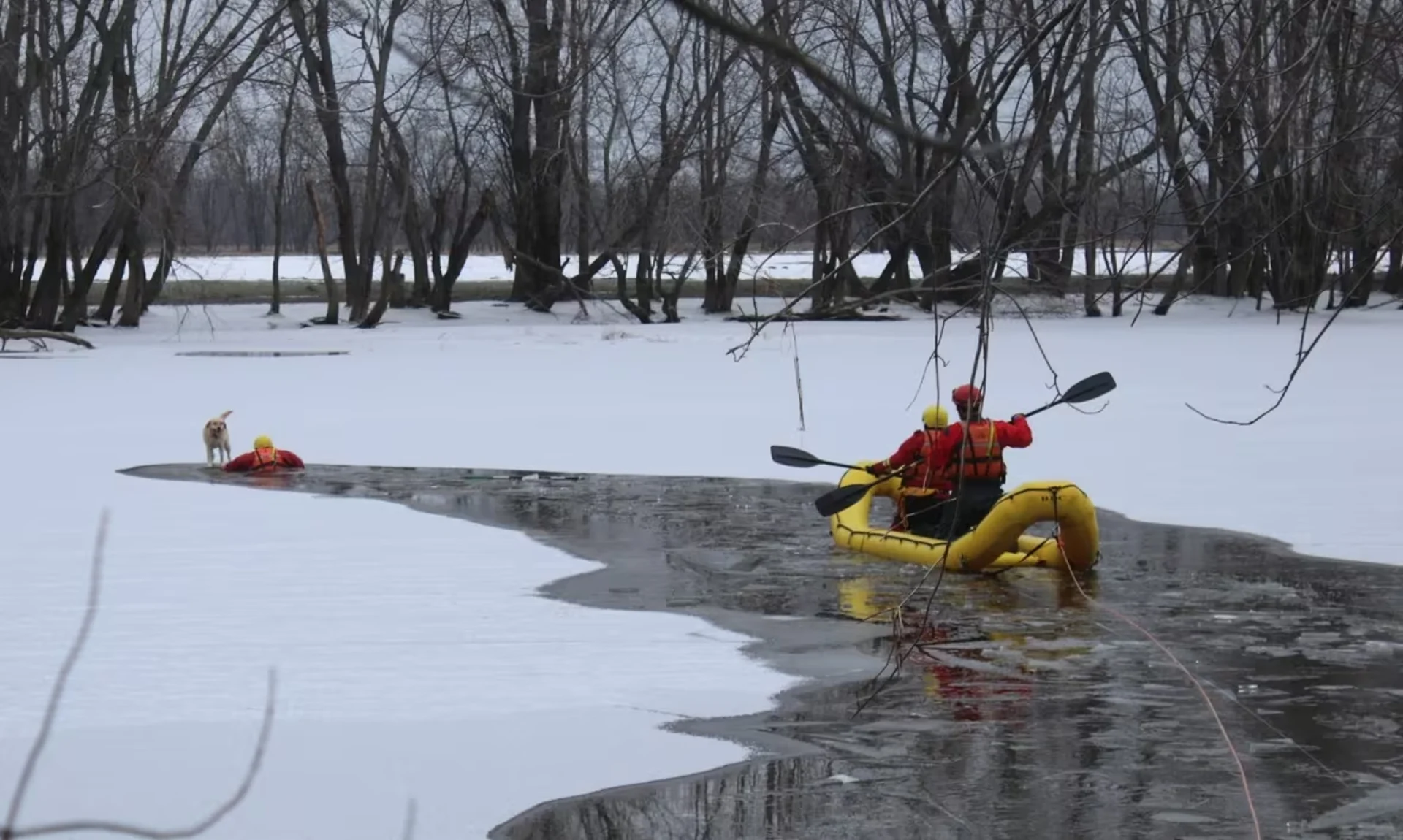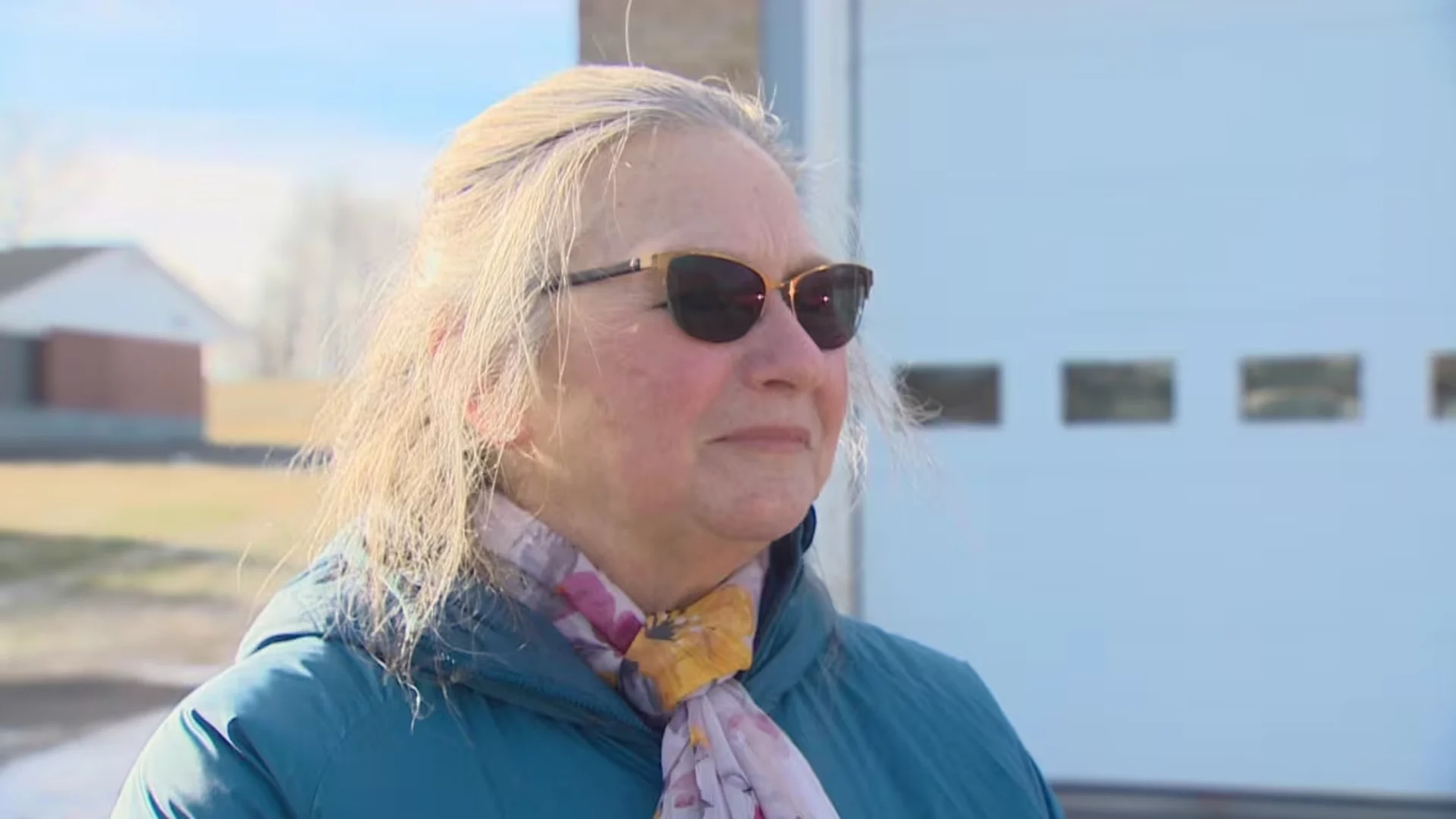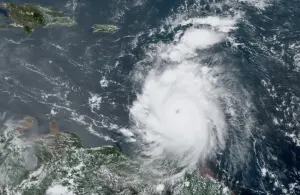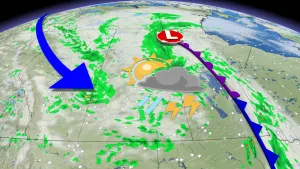
Dramatic dog rescue a reminder of ice safety amid rapidly changing weather
2 Labradors rescued from icy water by Oromocto Fire Department
Friends Kathy Nixon and Keith Dobbin, and their dogs Skye and Abby, were out for their daily walk in Lincoln's Thatch Road Park, along the Oromocto River, on Thursday morning.
Everything was going as usual, until it wasn't.
"The dogs, we usually let them off leash around the back part, so that they get a chance to do some running around," Dobbin said.
But all of a sudden, one of the two dogs, Labrador retrievers, picked up a scent and ran off onto the ice, with the other dog close behind.
DON'T MISS: Après-ski at a full size ice bar this winter at this Alberta resort
When Nixon and Dobbin tried to call the dogs back, Abby broke through the thin ice and fell in. Skye, who had made it farther out, sat down before getting to the thinnest part of the ice and cried.
Dobbin said they tried breaking the ice to get to Abby but were unsuccessful, so they called 911.
He feared Abby would go under and not come up while they waited for the fire department.

Firefighters paddle through the water to rescue a yellow Lab who was stuck too far from shore. (Oromocto Fire Department/Facebook)
"Not knowing — that was the hard part," he said.
Nixon said when the Oromocto Fire Department arrived, there was someone in the water within two minutes, wading out to rescue the animals.

Dog owner Kathy Nixon said when the Oromocto Fire Department arrived, there was someone in the water within two minutes, wading out to rescue the two dogs. (Pat Richard/CBC)
"They literally risked their lives for my dog," she said.
Ice can be deceptive, says fire chief
Deputy Chief Richard Cummings said that with on-and-off rain and a mix of temperatures lately, ice can be deceiving.
He said the ice-covered water, which the department said the river, may have appeared frozen solid. But even if some areas were well-frozen, the thickness can change just a few steps away.
"Any ice is unsafe ice at this point," he said.
Cummings said it can be dangerous if people try to go in after their animals, as they may end up in a precarious position as well.
But firefighters have ice-rescue suits that are tethered to shore, enabling them to handle the situation safely.
He said with this rescue, the first dog in the water was about 50 feet off the shore, but the second was 150 to 200 feet out. Firefighters had to break a trench all the way to the more distant dog and use a watercraft, since it was too dangerous to walk out on top of the ice.
"It was really a close call for the local family," he said.
"Somebody's pet can get out on the ice, a child can get out on the ice, and they can get out on the ice a lot further than an adult can get. So they get out there, and they get in trouble."
Cummings said people who do plan to venture onto the ice in the winter should properly understand the conditions. He said moving water, like a river as opposed to a lake, would lessen the strength of the ice.
He advised people to exercise caution and remember that even if something appears to be frozen over, there is no way of knowing the true thickness of the ice by looking at it.
Dangerous time
Cummings said there are always a few calls each year because of unsafe ice.
"This time in the winter is particularly dangerous because the ice is just forming," he said.
"It seems each year as the winter goes on, [it] used to be we would have really solid ice, you know, mid-December, between December and New Year's, we would have solid ice. We're not seeing that anymore."
For Dobbin, the experience was an "eyeopener."
And the next day, when Dobbin and Nixon went out for their morning walk, Abby and Sky were leashed and kept close by.
WATCH: Top 3 tips on skiing with your toddler
The story was written by Hannah Rudderham and published for CBC News









